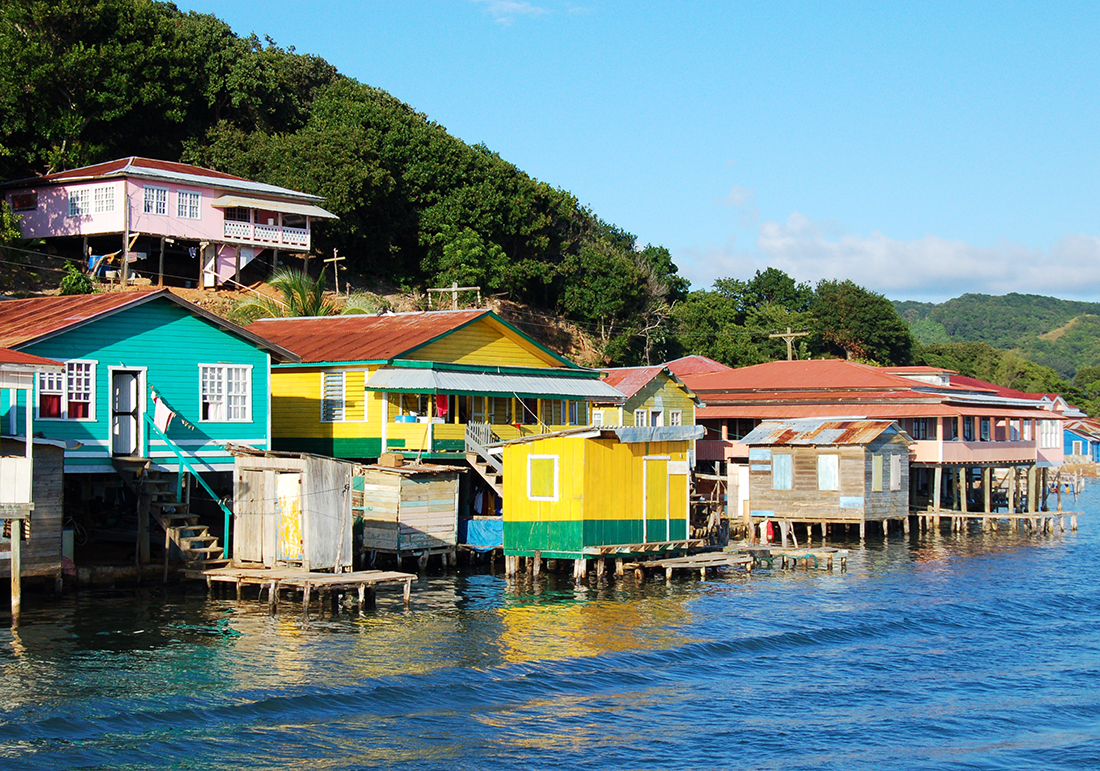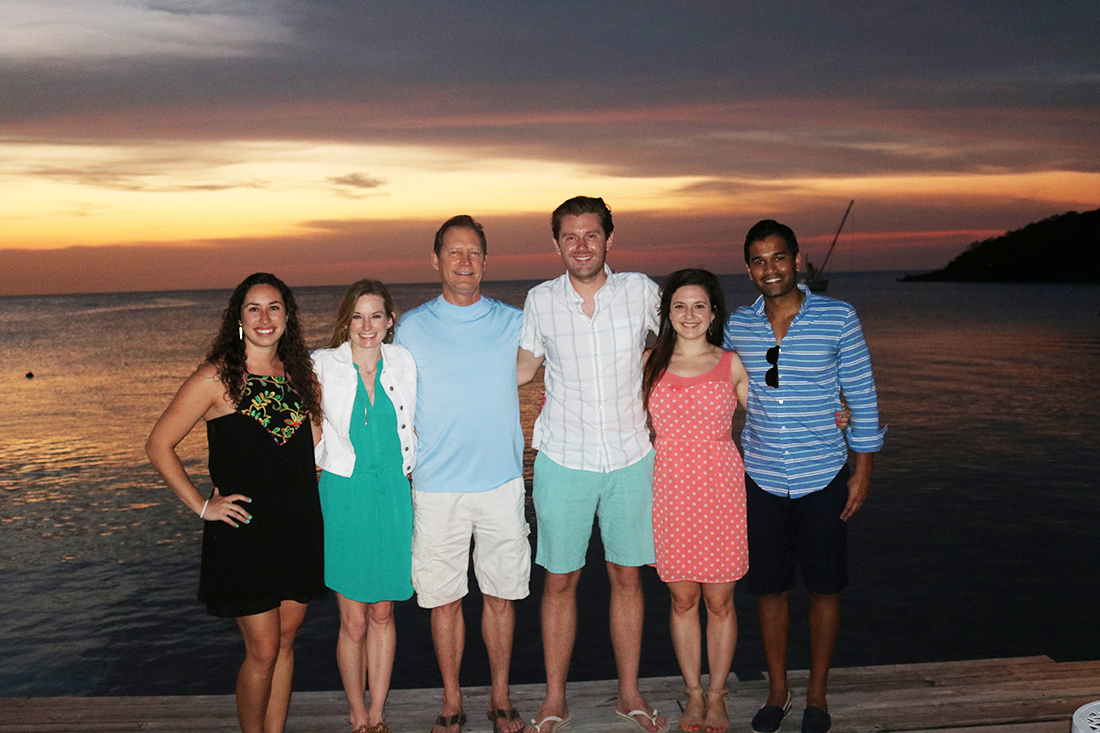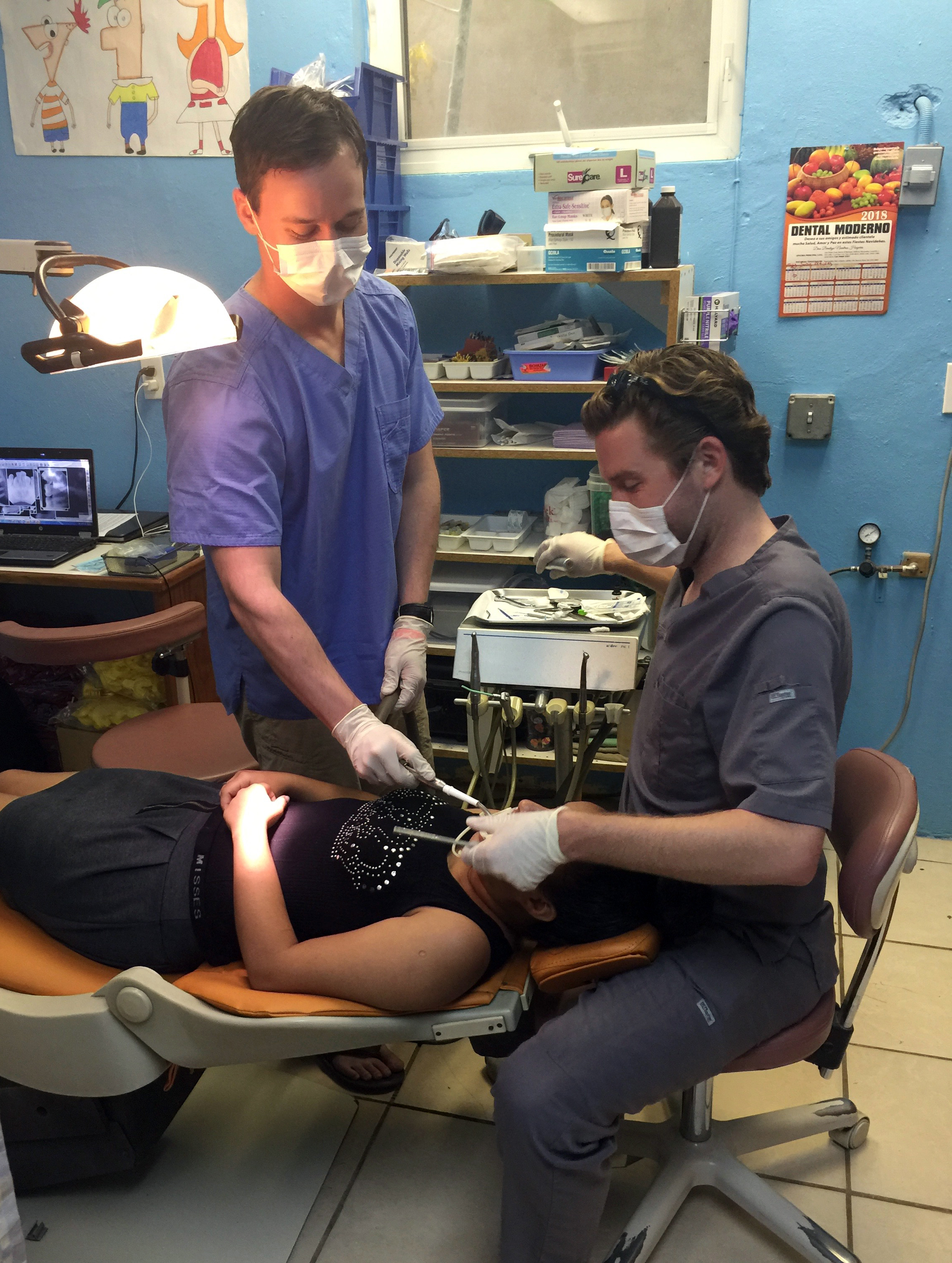Braces by the sea

An interesting trend has occurred in Roatán, Honduras, over the past several decades. Between 1970 and 2000, word began to spread about this small island off the country’s northern coast. More than 1 million people now visit Roatán each year, in large part because of its close reach to the Mesoamerican Reef, a diving and snorkeling mecca. That’s in sharp contrast to the average 900 visitors per year in 1970, according to a 2016 NASA report. As the island’s tourism industry has grown, so too has the potential for higher incomes.
One of the keys to attaining those opportunities, according to Dr. Monte Collins ’84, ’86, adjunct assistant professor in orthodontics: a nice smile.
“If they have a good-looking smile, it will help them get a job,” says Collins. And then comes a trickle-down effect of better wages and with that, increased quality of life.
It’s what drew him to serve patients at Clinic Esperanza, which runs almost entirely on donations, especially $5 contributions from patients, four years ago. The clinic has a medley of volunteers from the health care sector, with new faces every day from all over the world. Dentistry, obstetrics and gynecology, laboratory services, and a pharmacy are all part of the mix; why not add orthodontics to its services? He called up Peggy Stranges, the clinic’s founder and president, to see if they had considered providing orthodontic care.
“The bizarre thing is, they had an orthodontist a couple years before I got there,” says Collins. That individual died unexpectedly in an accident, and by the time of Collins’ arrival in Roatán, there were still a few kids hanging on with braces intact. So he picked up where his predecessor left off, finishing treatment for current patients and starting braces for new ones.
He travels to the island every four months, providing a rarity in the dental mission field: consistent, sustainable orthodontic care. The clinic has a full-time pediatric dentist on staff whom Collins has trained to change wires and fix broken brackets between visits, but otherwise, the level of care is identical to that provided at his longtime Tarrant County practice, Johnson & Collins Orthodontics. Most supplies, donated by Collins and orthodontic product supplier Ormco, fit in a suitcase.
Some reinforcements accompanied Collins on his latest venture this spring: the entire second-year graduate orthodontic class at Texas A&M College of Dentistry.
He merely mentioned his Roatán trips to the six graduate students the previous year, and throughout the semesters that followed, they reminded him they were interested in going, too. By December 2017, it was official. The class took the trip during spring break, alternating clinic days to treat approximately 50 patients throughout the week, which also allotted them some much-needed relaxation.
“We are at that point where we feel comfortable working on our own,” says second-year graduate student Dr. Jacob Bleyer, “and having the freedom to do that gives you confidence.”

Collins’ vantage point in the College of Dentistry’s orthodontic clinic one day a week allows him to contrast the graduate students’ experiences at Clinic Esperanza.
“It gives them a chance to not have someone looking over their shoulder telling them what to do,” says Collins, who oversaw their work in Honduras. “They get to see patients and make snap decisions just as if they were in private practice, facing things that they’ll probably never see at home as far as some of the compromises that have to be made for missing teeth.”

Navigating those compromises, as well as treatment planning without panoramic X-rays or study models, was perhaps one of the biggest challenges during the trip, says Dr. Elisabeth Barnhart, a second-year orthodontic graduate student.
“A lot of the patients have very highly cavitated first molars,” she says, citing local drinking water and sugary drinks as prime culprits. It’s a bit of a challenge, considering those teeth serve as anchors in orthodontic care. “Some of the teeth may not be able to be saved, and you’re trying to plan your treatment around that,” Barnhart adds.
What’s more, the situation occurred in nearly every single patient she screened.
“It makes it hard for some of our treatment planning,” says Dr. Jennifer Ryan, a second-year orthodontic graduate student. “You are helping them fix a problem that they didn’t know was happening; that’s not something we normally do here.”
Even so, patients clamored to be seen.
“The kids are so tough,” says Ryan. “They were lining up at the door. There’s such a language barrier, but they and their parents are just so willing to let you do whatever you think is best. They were super easy to work on and so thankful.”